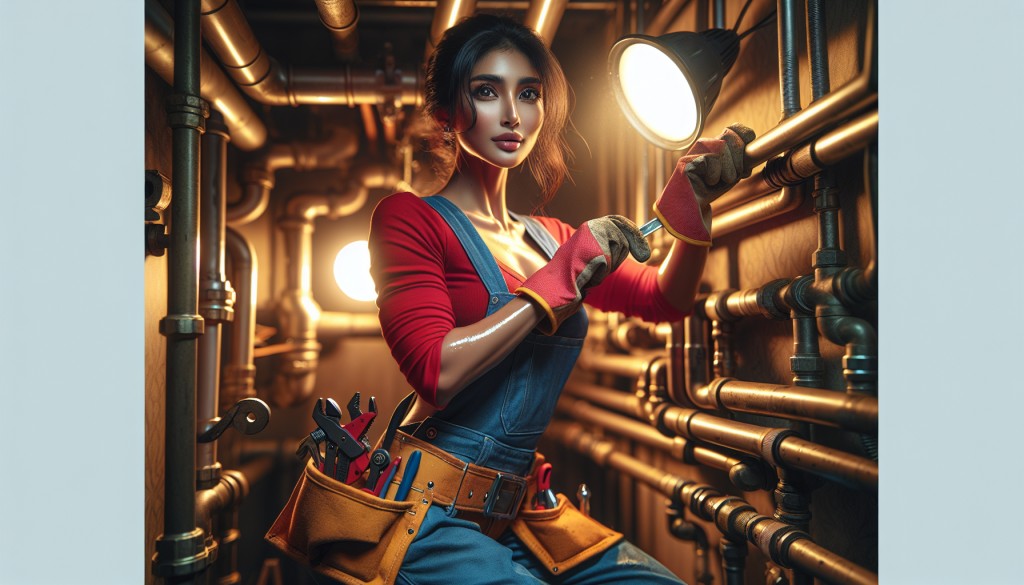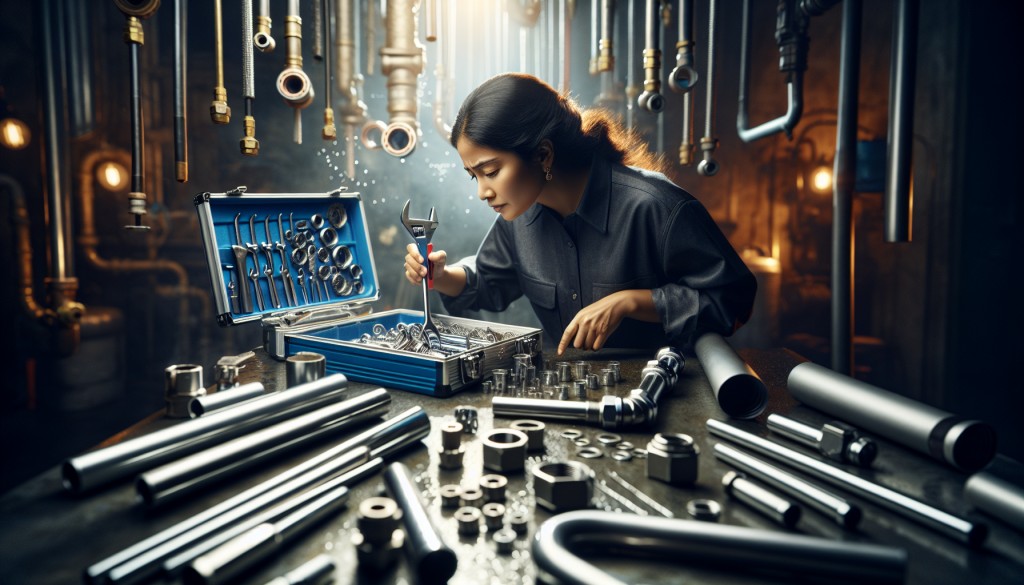Evaluating Plumber Experience and Expertise
When it comes to home maintenance, few roles are as crucial as that of a plumber. Is Your Lidcombe Plumbing System Up to Code? . Plumbing issues can range from minor inconveniences to significant disruptions, and resolving them efficiently requires a professional with the right experience and expertise. In Lidcombe, a suburb bustling with both residential and commercial establishments, choosing the right plumber involves careful consideration of their skills and understanding of local specifics.
Evaluating a plumbers experience begins with looking at their tenure in the field. An experienced plumber is likely to have encountered a wide array of plumbing issues, equipping them with the knowledge to diagnose and fix problems swiftly. This depth of experience often translates into more accurate solutions, saving homeowners both time and money in the long run. Uniform Plumbing Code In Lidcombe, where the mix of older homes and modern developments presents unique plumbing challenges, an experienced plumber is invaluable.
In addition to years of service, a plumber's expertise is crucial.
Local Insights: Choosing the Right Plumber in Lidcombe - Sink
- Nipple (plumbing)
- Piping and plumbing fitting
- Hydraulics
- Pump
- Wastewater
Local insights play a pivotal role in choosing the right plumber. Plumbers familiar with Lidcombe will have a better grasp of the common plumbing issues faced by residents, such as those caused by the local climate or specific building codes. Their knowledge of local suppliers and regulations ensures compliance and access to necessary parts without delay. Additionally, a plumber with a good reputation in the community often indicates reliability and quality service, as word-of-mouth recommendations remain a powerful tool in local business success.
Ultimately, choosing the right plumber in Lidcombe involves a balance of evaluating experience, expertise, and local knowledge. Homeowners should not hesitate to ask potential plumbers about their previous projects, request references, and verify licenses and certifications. By doing so, they can ensure that they are entrusting their plumbing needs to a professional who is not only skilled but also understands the unique demands of working in Lidcombe. Nipple (plumbing) This thoughtful selection process will lead to better outcomes, ensuring that plumbing issues are resolved efficiently and effectively, safeguarding the comfort and functionality of ones home.

Comparing Plumbing Service Costs
When it comes to maintaining the integrity and functionality of our homes, plumbing is an essential service that cannot be overlooked. In Lidcombe, a suburb known for its blend of residential and commercial properties, choosing the right plumber requires both a keen eye and an understanding of local service costs. Comparing plumbing service costs is a crucial step in ensuring that you receive quality service at a fair price.
The first factor to consider is the nature and scope of the plumbing work required. Plumbing issues can range from minor leaks and blockages to major installations and repairs. The complexity and scale of the work will significantly influence the cost. For instance, fixing a simple leak might be relatively inexpensive, while installing a new hot water system or addressing extensive pipe damage will naturally incur higher costs. Therefore, having a clear understanding of what needs to be done can help you obtain more accurate quotes from local plumbers.
Another important consideration is the experience and reputation of the plumbing service provider. In Lidcombe, as in many other communities, plumbers with a solid track record and positive customer reviews might charge more for their services. However, this premium often reflects the assurance of quality workmanship and reliability. Opting for a well-regarded plumber can prevent potential problems down the line, saving you money and stress in the long run. It is wise to research and compare the reputations of different plumbers, seeking recommendations from friends, family, or online platforms.

Geographical location within Lidcombe can also play a role in service costs. Plumbers may charge differently based on their proximity to your home or business. Those located further away might add travel fees, while local plumbers might offer more competitive rates. Additionally, understanding the typical pricing trends in Lidcombe can provide a benchmark when comparing quotes. This knowledge allows you to discern what constitutes a reasonable price for specific plumbing services in your area.
Moreover, it is essential to inquire about any additional charges that might not be immediately apparent. Some plumbers might have hidden fees for after-hours services, emergency call-outs, or the disposal of old materials. Clarifying these potential costs upfront ensures that you are not caught off guard by unexpected expenses.
Finally, consider the value of warranties and guarantees offered by plumbing services. A slightly higher initial cost might be justified if the plumber provides a robust warranty on their work. Sink This guarantee can be a valuable safety net, offering peace of mind that if something goes wrong, it will be rectified without additional expense.
In conclusion, choosing the right plumber in Lidcombe involves a careful comparison of service costs, taking into account the scope of work, reputation, location, and potential hidden fees. By conducting thorough research and being mindful of these factors, you can secure a plumbing service that is both cost-effective and reliable, ensuring the smooth operation of your home or businesss plumbing systems.

Reading Reviews and Getting Recommendations
Finding the right plumber in Lidcombe, or any area for that matter, can often feel like a daunting task. Plumbing issues can range from minor inconveniences to major disruptions, making it crucial to have a reliable professional on hand. The key to making an informed decision lies in reading reviews and getting recommendations, which offer invaluable local insights.
Piping
Reviews have become a cornerstone of consumer decision-making. They provide firsthand accounts of previous customers experiences, shedding light on a plumbers reliability, professionalism, and quality of work. When looking for a plumber in Lidcombe, pay close attention to reviews that highlight punctuality, problem-solving abilities, and customer service. A pattern of positive feedback in these areas often signifies a trustworthy and competent professional. Conversely, beware of consistently negative reviews, as they may indicate recurring issues that could also affect your experience.
In addition to reviews, getting personal recommendations can further guide your choice. Local insights from friends, family, or neighbors who have faced similar plumbing issues can be particularly valuable. They can offer honest opinions based on their own experiences, providing details that reviews might miss, such as the plumbers approachability or willingness to go the extra mile. Personal recommendations can also help you gauge the local market, giving you a sense of what reasonable pricing looks like in Lidcombe.
Furthermore, consider plumbers who are well-established in the community. A long-standing business often reflects a level of trust and reliability, as maintaining a good reputation in a specific area requires consistent performance. Local plumbers who are familiar with the areas common plumbing issues can also offer more targeted solutions, saving time and potentially reducing costs.
In conclusion, choosing the right plumber in Lidcombe involves a combination of reading reviews and seeking recommendations. These steps provide a comprehensive view of potential plumbers, ensuring that you find someone who is not only skilled but also trustworthy and community-oriented. By taking the time to gather and consider local insights, you can confidently select a plumber who will address your needs efficiently and professionally.
Ensuring Proper Licensing and Insurance
When it comes to plumbing services in Lidcombe, ensuring proper licensing and insurance is a critical factor that can significantly impact the quality and reliability of the work performed. Choosing the right plumber is not merely about finding someone who can fix a leaky faucet or unclog a drain; it involves entrusting an individual or company with the safety and functionality of a crucial component of your home. Therefore, understanding the importance of proper licensing and insurance can help homeowners make informed decisions and ensure peace of mind.
Licensing serves as a guarantee of competence and professionalism. In Lidcombe, as in many other regions, plumbers are required to hold a valid license to legally perform plumbing work. This license is not just a formality; it is a testament that the plumber has undergone the necessary training and possesses the skills and knowledge required to carry out plumbing tasks effectively. A licensed plumber is familiar with the local building codes and regulations, which is crucial for ensuring that all work is compliant with legal standards. Hiring a licensed plumber minimizes the risk of substandard work that could lead to costly repairs or even hazards such as water damage or gas leaks.
Insurance is another critical consideration when selecting a plumber in Lidcombe. Plumbing work can sometimes involve risks, and accidents can occur despite the best precautions. A properly insured plumber provides a safety net for both the homeowner and the plumber. Liability insurance protects homeowners from being financially responsible for any damage that might occur as a result of the plumbing work. For instance, if a plumber accidentally causes water damage to your property, their insurance should cover the cost of repairs. Additionally, workers compensation insurance is important as it covers any injuries the plumber might sustain while working on your premises, preventing potential legal complications for the homeowner.
The combination of licensing and insurance not only reflects a plumbers professionalism but also their commitment to customer satisfaction and safety. Homeowners are encouraged to verify a plumbers credentials before hiring them. This can typically be done by asking for their license number and checking it with relevant local authorities. Similarly, requesting proof of insurance and understanding the coverage it provides is a prudent step to ensure that you are protected in the event of any unforeseen incidents.
In conclusion, ensuring proper licensing and insurance when choosing a plumber in Lidcombe is a fundamental aspect of safeguarding your home and investment. It reflects the plumbers adherence to industry standards and their dedication to providing quality service. By taking the time to verify these credentials, homeowners can avoid potential pitfalls and enjoy the confidence that comes with knowing their plumbing needs are in capable and trustworthy hands.







